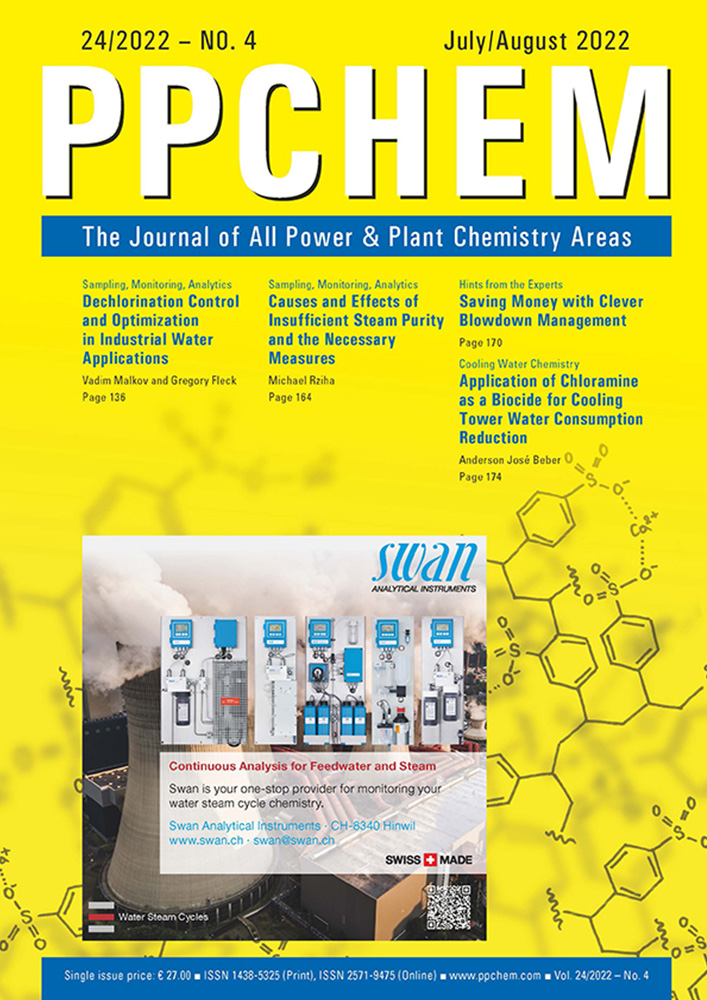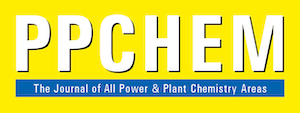
For members only
ABSTRACTS
Dechlorination Control and Optimization in Industrial Water Applications
Vadim Malkov and Gregory Fleck
The use of reverse osmosis (RO) membranes for water treatment has almost doubled in the last five years [1]. The use is widespread across many industries, from municipal water and wastewater treatment to ultrapure water production in various industrial applications. For efficient RO membrane operation, it is important to accurately monitor and control the residual chlorine concentration in the feedwater, which allows for minimizing of RO membrane maintenance and extension of membrane life. Multiple studies demonstrate that prolonged exposure of RO membranes to free chlorine exceeding 38 μg · L–1 (ppb) (based on 1 000 mg · L–1-hours over three years [2]) is detrimental to the membrane structure and integrity, while the absence of the disinfectant and/or excess of dechlorinating agents promotes biofouling and causes loss of recovery. To maintain this delicate balance, membrane operators must accurately monitor oxidant concentration and addition of bisulfite, especially in the RO feedwater.
PPCHEM® 2022, 24(4), 136–159
For Members only
Causes and Effects of Insufficient Steam Purity and the Necessary Measures
Michael Rziha
As is well known, contamination in the steam very quickly leads to impairment of the steam turbine, ranging from loss of efficiency to a massive reduction in service life, or even to rapid destruction.
The causes and sources for the entry of contamination are very diverse, especially in industrial plants. Plant-specific knowledge of the possible entry points and the types of possible contamination is of crucial importance for the determination of a suitable monitoring strategy for the most trouble-free and damage-free operation of the steam turbine.
In addition, if such contamination occurs, suitable measures must be taken very quickly in order to avoid long-term, undesirable and, above all, cost-intensive damage to the steam turbine.
The most common sources and causes, their detection, and recommendations or necessary avoidance strategies from the perspective of power plant chemistry are presented.
PPCHEM® 2022, 24(4), 164–169
For Members only
HINTS FROM THE EXPERTS
Saving Money with Clever Blowdown Management
Clean chemical conditions within the water-steam cycle and the steam generator systems are of utmost importance for trouble-free operation and to maintain the required steam purity for steam turbine operation. If the control of the chemical regime is not managed correctly, the introduced contaminants will lead to the build-up of layers on the blading of the turbine, reducing steam turbine efficiency and leading to corrosion processes which can cause considerable damage in the water-steam cycle and steam generator systems. In the worst case the steam generator or the turbine will be reduced to scrap metal.
To control these contaminants and to avoid an excessive concentration within the evaporator, the blowdown of evaporator water is used to keep the concentration of the contaminants within allowable limits.
However, this method of concentration limitation has the negative side-effect of a loss of valuable enthalpy. It also increases the consumption of demineralized water and chemicals.
PPCHEM® 2022, 24(4), 170–173
For Members only
Application of Chloramine as a Biocide for Cooling Tower Water Consumption Reduction
Anderson José Beber
This paper shows the results of the application of a mild oxidizer on a large cooling tower at a power plant in southern Brazil. This cooling tower utilizes grey water (tertiary treated domestic sewage) as make-up. With the application of this technology, there was an improvement in both microbiological control and corrosion rates. Additionally, the plant was able to increase the concentration cycles from an average of 4.5 up to 6.5, resulting in an annual savings of over 400 000 USD.
PPCHEM® 2022, 24(4), 174–182

